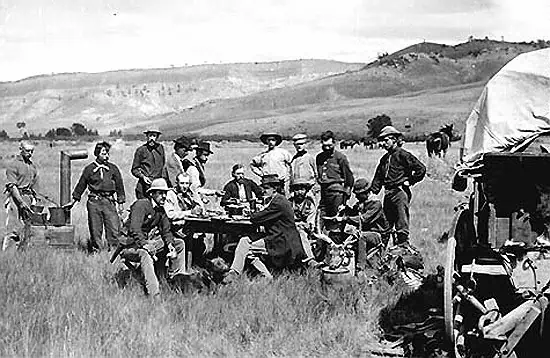The National Park System isn’t just about one type of park. “System” is a term of convenience for a word salad of designations – national parks, historic sites, preserves, seashores, lakeshores, battlefields, recreation areas, monuments, scenic trails, scenic rivers … the list goes on.
Who came up with all these names anyway?
The U.S. Congress and Presidents have been designating this wide swath of over 400 places and names ever since Congress established Yellowstone National Park in 1872. But don’t judge a book by its cover. It wasn’t very orderly, but perhaps any place worthy of recognition has to be picked creatively and chaotically—one place at a time by people and organizations who care about the place and petition their government to protect it. That’s our messy democracy.
Fast forward over 100 years later, long after the National Park Service was created, and picture yourself a member of Congress perturbed by the maze of sites and names that previous politicians enacted. How do I make sense of all this? Blame it on my predecessors? No, this is 1970, not today.

You craft a bill instead, with a bland name to bring order to the chaos, the “National Park Service General Authorities Act.” It says that all these natural, historic, and recreation areas in every major region of the United States belong in “one national park system as cumulative expressions of a single national heritage…” Lofty language that, but what does it mean in real terms? Basically, a park by any other name is a park. It also says: “the protection, management, and administration of all these areas shall be conducted in light of the high public value and integrity of the National Park System.”
Beyond the Big Names
So, it’s all one big, beautiful system. But does that change your decision on which park to visit and what to do there? Yes, if you consider all the system has to offer. Download the National Park Service app and use the Find a Park button. For example, a historic site or battlefield may have more than meets the eye.
Check out Chickamauga and Chattanooga National Military Park in Tennessee and Georgia for a change of pace, where Union and Confederate generals challenged opposing armies for control of the “Gateway of the South” in 1863. It’s both Civil War history and nature combined. With miles of trails and water you can bike, hike, paddle and rock climb there, too. By visiting a lesser-known park you might have fewer people around you, too, especially outside of the summer months.
Also, remember “the high public value and integrity of the National Park System?” The parks really love visitors who plan ahead because they want you to be safe and to respect the resources you enjoy. Check the Park Alerts on the website before you go and the Plan Ahead and Things to Do sections.
The Leave No Trace stewardship ethic began decades ago, grew into a movement, and is never more relevant than today as visitation and impacts to the parks have grown exponentially. If every visitor follows the Seven Principles of LNT and obeys park regulations, nature and visitors alike will benefit.
Be A Friend
The National Park Service workforce is shrinking dramatically, too. Consider volunteering or donating to the “friends of” groups for your favorite parks. And participate in park planning. Click the Management section. Parks need your input to make the right decisions.
Go enjoy all this big, beautiful system has to offer and recreate responsibly. Maybe you will discover that the not-so-obvious attractions in lesser-known parks can hold their own with the big name parks.
And to make things even more interesting (or complicated?) my next blog will explore international designations – the World Heritage Areas and Biosphere Regions of the world and the U.S.
Opinions expressed in this content belong to the author and do not represent official stances of the National Park Service.

Cliff McCreedy is an author and filmmaker who creates stories that inspire people to conserve our natural and cultural heritage. His credits include Mammoth Cave Biosphere Region – Water connects us all, one of a series he produced and directed in collaboration with the American University Center for Environmental Filmmaking. He has produced environmental education videos for middle schools and coral reef education and training videos for the recreational diving industry.
Cliff also worked for passage of legislation in Congress to release the Voice of America coral reef documentary The Fragile Ring of Life in the United States, a film about the worldwide plight of coral reefs. In his current role as National Park Service Science Applications Coordinator, Cliff coordinates the U.S. Biosphere Network of 28 biosphere regions in the U.S. that work locally and globally to enhance the health and well-being of people and the environment.
Top photo of Moccasin Bend in Chickamauga and Chattanooga National Military Park by National Park Service. Moccasin Bend is a peninsula in the Tennessee River, where the park preserves several areas for their historical and archeological significance.

